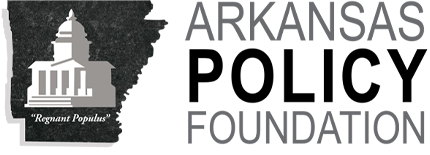“The most callused aspect of the current education monopoly in Arkansas is that it willingly and deliberately forces children–except those whose parents have wealth–to attend bad schools. And it does so with financial resources taken from parents already struggling financially and at the expense of their ability to choose a better school for their sons and daughters.” Policy Foundation report,1 September 1998
(December 2012) The policy climate has shifted dramatically in Arkansas, with Republicans winning control of the state Senate and state House for the first time since Reconstruction. The stage is set for a serious policy debate around another question2 advanced by the Policy Foundation since a 1998 report: “How to advance school choice in Arkansas?’ Education policy in this new environment should focus on providing children with the opportunity to learn in a safe, functional school environment.
The Market for School Choice in Arkansas
The idea of education reform has advanced in Arkansas since Policy Foundation analysts Allyson Tucker and Donna Watson authored their 1996 study recommending charter schools. The charter law was expanded in 1999, 2005, 2007, and 2011, and 8,500 students attended 21 open-enrollment and 14 district-conversion Arkansas charters3 in 2011.4 Charter students are only one segment of the market for school choice in Arkansas, an overlooked topic in the education reform debate.
Charter students are the smallest segment of this niche Arkansas education market. The Policy Foundation identifies these market segments as follows:
∙ Charter school students 8,500
∙ Public school choice students 15,6825
∙ Homeschooled students 16,3036
∙ Private school students 19,3757
Total (2011) 59,860
The market has expanded to every region of Arkansas, and serves more than one in 10 students at the K-12 level.
The market for school choice expands if students in failing K-12 districts or schools are included. The Policy Foundation published four annual reports (2004-08) that issued letter grades to every Arkansas K-12 public school district based on student performance on national standardized tests. Some districts in these reports were issued failing (‘F’) grades. The state Department of Education issued a report in 2011 that found half the failing schools in Arkansas were in Little Rock, the state’s largest public school district.8 The state report, required by PA 35 of 2003 (2nd extraordinary session) was compiled by researchers at the Univ. of Arkansas. PA 35 creates a public school choice option for students in schools that receive an “in need of immediate improvement” rating for two consecutive years.
Private School Choice in Other States
Twenty-one (21) states and the District of Columbia have school choice programs serving parents and guardians who wish to enroll their children in private schools.9 But Arkansas does not have any private school programs two decades after Wisconsin launched a program in Milwaukee in 1990-91.
Types of school choice programs include educational savings accounts, individual tax credits and deductions, tax credit scholarships, and vouchers.
Educational savings accounts Arizona’s program allows “parents of children with disabilities to withdraw their children from public district or charter schools and receive a portion of their public funding deposited into an education savings account,” according to the nonprofit Friedman Foundation. Parents can use their accounts “to pay for private school tuition, virtual education programs, private tutoring, or future college expenses.”
Individual tax credits North Carolina’s program allows “parents of special needs children to claim a tax credit of up to $6,000 for educational expenses that include private school tuition, therapy, and tutoring,” the Friedman Foundation reports. “It is estimated that up to five percent of qualified students will take advantage of the” tax credit, saving taxpayers “up to $10 million and districts up to $4 million per year” within five years.
Iowa, Illinois and Minnesota also provide tax credits for education.
Educational deductions Minnesota provides a tax deduction covering educational expenses for students in any private or public school, including homeschooling. The program dates to 1955, and lowers a family’s total tax liability. The deduction covers books, tutors, academic after-school programs, other non-tuition educational expenses and tuition payments at private schools, the Friedman Foundation reports.
Indiana and Louisiana also provide tax deductions for education.
Tax Credit Scholarships Arizona’s programs are among the most common private school choice programs. Arizona allows corporate tax credits for school tuition organizations that distribute private school scholarships, and credits to special education and foster care students.
Florida, Georgia, Iowa, Indiana, Louisiana, New Hampshire, Oklahoma, Pennsylvania, Rhode Island and Virginia also offer tax credit scholarships.
Vouchers The Milwaukee program, the nation’s oldest enrolled 20,189 students at 102 private schools in 2010-11.
Colorado, the District of Columbia, Florida, Georgia, Indiana, Louisiana, Maine, Mississippi, Ohio, Oklahoma, Utah, Vermont, and Wisconsin also offer voucher programs.
Mississippi’s adoption of school choice earlier this year means six states in the southeast region have some type of program.
Conclusion: Private School Choice in Arkansas
Private school choice can advance in the new Arkansas policy environment in a broad or narrow manner.
A broad initiative would make one or all of the programs available to the entire market for school choice in Arkansas.
A narrow initiative would address children with special needs. Most states in the region have followed this approach:
∙ Florida, John M. McKay Scholarships for Students with Disabilities Program
∙ Georgia, Special Needs Scholarship Program
∙ Louisiana, School Choice Pilot Program for Certain Students with Exceptionalities
∙ Mississippi, Dyslexia Therapy Scholarships
∙ North Carolina, Tax Credits for Children with Disabilities
This research memo shall not be construed as supporting or opposing any legislation.
1 “Arkansas’ Public Schools: A Thirty Year $20 Billion Taxpayer Investment Yields An Unprecedented Crisis in Academic Performance.” The study is dedicated to the late Karen L. Henry (1951-1998), a Policy Foundation board member, Murphy Commission Education Team co-chair, and passionate crusader for education reform.
2 This memo is the second in a three-part series on the new Arkansas policy environment. Part one (November 2012) examined fiscal policy, i.e., “How to Cut Taxes in Arkansas.”
3 http://www.arkansased.org/contact-us/charter-schools/charter_school_categories/open-enrollment
http://www.arkansased.org/contact-us/charter-schools/charter_school_categories/district-conversion
4 Policy Foundation analysis of NORMES data: http://normessasweb.uark.edu/schoolperformance/beta/. The state Department of Education should be required to report charter enrollment to parents on its website.
5 “For the entire state of Arkansas in the 2010-2011 school year, 15,682 students were enrolled in receiving districts under some form of choice transfer. (Ex. 43, Table 3). This represents 3.35% of the total elementary and secondary student body in the State.” By contrast, “there were 468,066 students enrolled in publicly funded education” in Arkansas. Memorandum Opinion and Order, Teague v. Arkansas Board of Education, et. al. Case No. 10-6098, June 8, 2012, U.S. District Court, Western District of Arkansas, Hot Springs Division. The school choice civil suit was filed on behalf of six children.
6 Policy Foundation research memo (March 2012): “Twice as many Arkansas Home School and Private School Students as AEA Members.” The memo relied on data from the state Department of Education and the Arkansas Nonpublic School Accrediting Association (ANSAA), a non-profit group.
7 ANSAA School Enrollment Statistics 2010-11, http://www.ansaa.com/memberschools.htm
8 Arkansas districts receiving failing (‘F’) grades in the final Policy Foundation report (2007-08) were Forrest City, Dermott, Augusta, Helena-West Helena, Turrell, Earle, Hughes, Dollarway, and Hermitage.
9 The Friedman Foundation for Educational Choice (www.edchoice.org)









